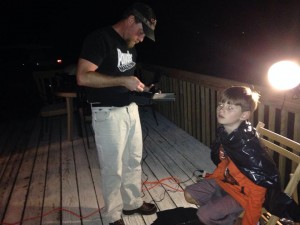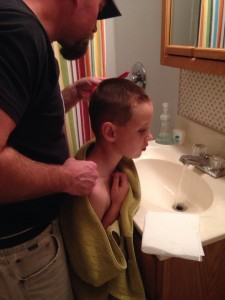Head lice invade over one million scalps per year, most of which tend to be kindergarten and early school age children, and quickly invade the rest of the family! There are many myths out there, like a lice infestation means you are unhygienic, but that actually isn’t true. The wingless, tiny parasites that live on your scalp and the blood source to your scalp, actually prefer a cleaner home, and is spread by close contact and sharing clothes (hats) and other personal items (towels, brushes, etc.) The official name is pediculosis capitis, and there are some ways to prevent your little ones from bringing home this infection, and what to do when they do bring it home!
The Symptoms of Lice:
Usually an intensely itchy scalp is the first sign of lice, but you also might notice red itchy bumps on your head and neck. When the lice bite into your scalp to get the blood to feed off of, it can cause a small allergic reaction, which leads to the bumps and itchiness. Also, when the lice lay eggs, people notice a increase in “dandruff” which is usually little yellow lice eggs that line the hair shafts. Adult lice tend to cause more itching around the back of the ears and neckline. And although you might see the eggs on the hair shafts, that is not enough to truly diagnose the infection, but if you do have a lice infection, the way to truly diagnose is to visualize lice moving on the scalp.
What are some Treatments?
If you notice any of these symptoms, you should try an Over-the-Counter (OTC) treatment shampoo, to try and kill off the parasites early. The OTC shampoos either have pyrethrin (like Rid) or permethrin (like Nix). If that does not work, you can call your Healthcare Practitioner (HCP) to prescribe a stronger treatment.
Malathion (Ovide) is a medication that should only be used on people older than 6 years old, rubbed into the hair and scalp, but it is highly flammable! Benzyl alcohol lotion, is also applied the same way as the malathion, and is a newer treatment that cannot be used on those less than 6 months old, and even in adults, the FDA does warn of risk of seizures and other pretty serious side effects. As with any treatment, make sure that your HCP is aware if you are pregnant or breastfeeding, as some of the drugs are absorbed into the skin and can be excreted in breast milk.
If you are worried about absorbing the chemicals, you can also just wet your hair, and comb it, using a fine tooth comb, every 3 days for 3 to four weeks, which allows you to remove the lice and eggs, and this is the best method with really young children. It obviously takes longer to get rid of the infestation, but it does so without chemicals, and could be an option for those wary of chemical use. As lice can live for up to around two days without a food source, and nits (the eggs) need to live at scalp temperature, combing the bugs and lice out can help to stop the parasites from further breeding.
Also, this won’t work for girls, but young boys, you can cut their hair short (as long as they aren’t opposed) to help remove the lice and nits! One of my good friends (who happens to also be an RN) JUST had this lovely experience, and was nice enough to send along the pics of their experience:
How do I prevent the spread in my home?
Heat and lack of food sources help to end the infestation in your home:
-Wash all clothes, sheets, towels, etc in hot water (at least 130F/54.4C) and dry on high for a minimum of 20 minutes.
-Brushes, combs, hair care products should be soaked in very hot water for at least 10 minutes (make sure to use insulated gloves to protect yourself from burns!)
-All comforters, pillows, bedding, and other items that are tough to wash, should be placed in air tight bags for 3-4 days to cut off air supply to the parasites and kill them and the nits.
-Vacuum all rugs and couches to remove any possible lice or nits
Also, remind your children not to share hats or scarves, helmets (if playing sports), or any brushes or other hair care products. This can’t always be avoided, and kids will be kids, but it is a good reminder to help and prevent an infection. And remember to tell them, if they do get lice, that it doesn’t mean they are unclean or dirty, but it is something that happens to many people, and with some quick treatments, a lot of laundry, and some parental strife, all will be back to normal soon! Plus, tell your child’s school nurse, coaches, etc to make sure that the infection isn’t spread and other parents know to look for symptoms.
Yours in Good Health
B



